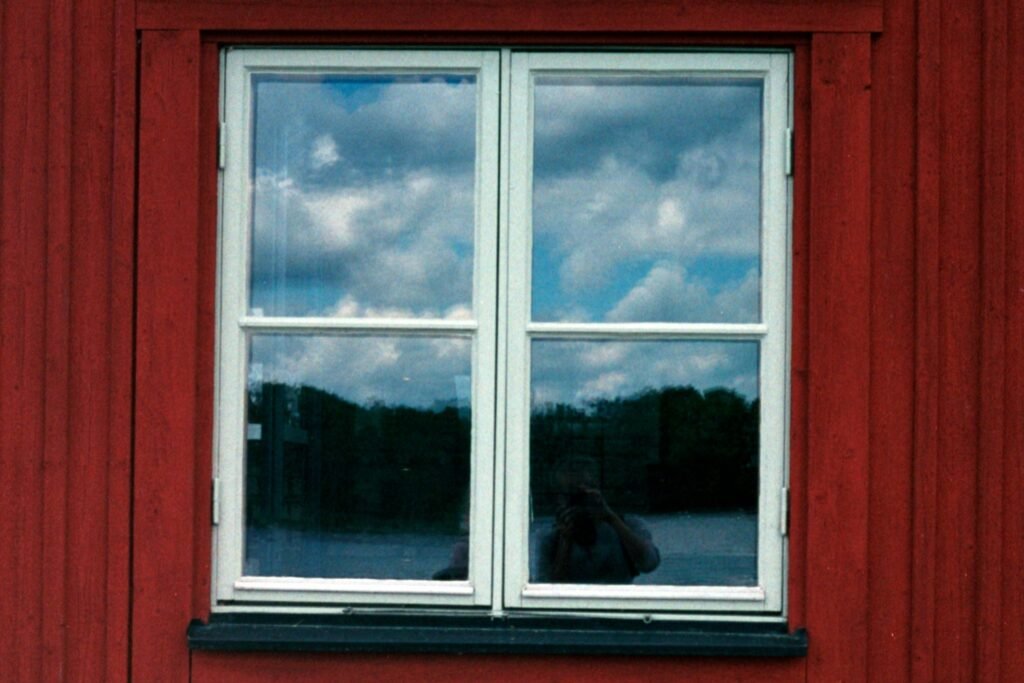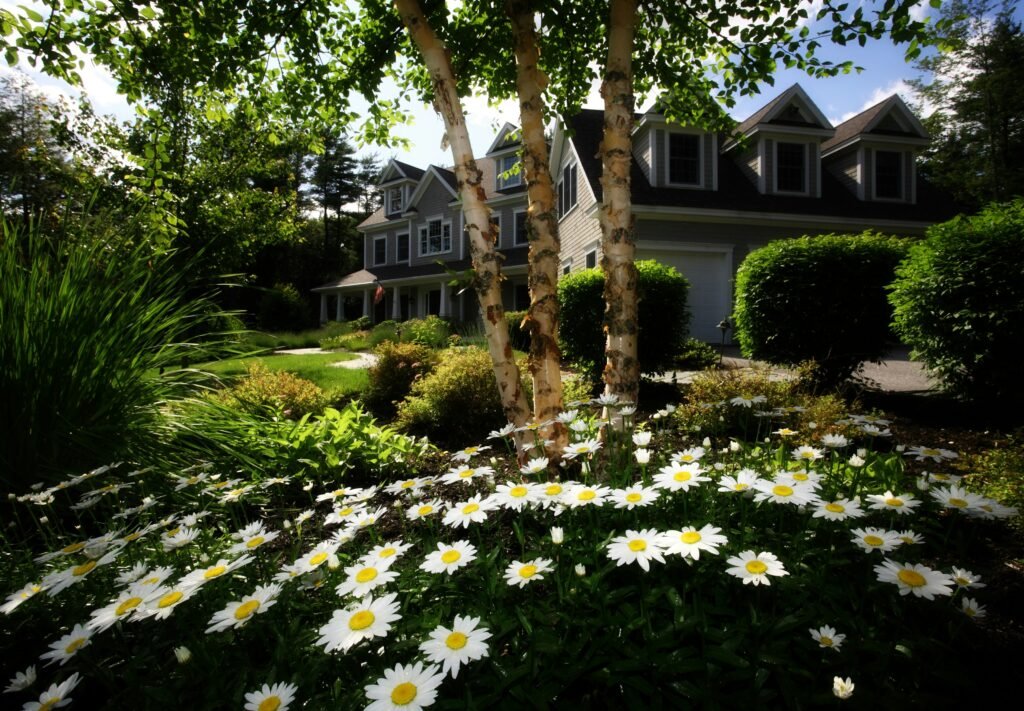It’s a sunny day. You’d love to open the windows, but you also don’t really feel like getting dressed.
You could stay in your dungeon all day and refuse to go near the sun. Or you could figure out a way to keep your neighbor from seeing you in your skivvies.
Your home should be a place where you can relax and unwind without worrying about prying eyes. However, in the pursuit of privacy, many homeowners overlook the importance of natural light. Sunshine and natural light have numerous benefits, including improved mood, increased productivity, and better sleep quality.
Is there a way to let natural light in while keeping privacy in your living room, bathroom or bedroom? Believe it or not, you don’t have to live in a dungeon to keep your neighbors from seeing in your house. In this article, we will explore various solutions to help you achieve this balance, focusing on window treatments, landscaping, and creative lighting strategies.
Window treatments for privacy and natural light
When it comes to balancing privacy and natural light, window treatments are often the first line of defense. There are several types of window treatments that can effectively block views while still allowing light to filter through.

Curtains, blinds and shutters
- Sheer curtains, for example, provide a soft, diffused light while obscuring the view from outside. They come in a variety of colors and patterns, making it easy to find a style that complements your decor. The color of your window treatments can affect the amount of natural light that enters your home. Lighter colors reflect more light, while darker colors absorb it.
- Blinds and shutters are another popular option for controlling light and privacy. Venetian blinds, made of wood, plastic, or metal, can be tilted to adjust the amount of light and visibility.
- Plantation shutters, with their wide louvers, offer a similar level of control while adding a touch of elegance to your windows.
- Cellular shades, also known as honeycomb shades, are a modern solution that provides both insulation and light control. Their unique structure allows light to filter through while maintaining privacy. They are available in various levels of opacity, from sheer to blackout, depending on your needs.
When selecting fabrics and materials for your window treatments, consider options that are specifically designed for light-filtering and privacy. Sheer fabrics, such as voile or linen, allow soft light to pass through while obscuring the view.
Window films, screens and tints
Window films and tints are another option for achieving privacy without sacrificing natural light. These thin, adhesive films can be applied directly to your window glass, creating a reflective or frosted appearance that obscures the view from outside while allowing light to pass through. Some films even offer additional benefits, such as UV protection and heat reduction. Solar screens, made of tightly woven material, can block up to 90% of UV rays and reduce glare while maintaining your view and allowing light in.

Second-story window options
When addressing privacy concerns for second-story windows, such as bathrooms or bedrooms, consider options that maintain your view while blocking the view from neighboring properties. Cellular shades with a top-down bottom-up design, or roller shades with a reverse roll mechanism, can provide privacy from below while still allowing you to enjoy the view and natural light.
Adjustable and smart home options
For maximum flexibility, consider adjustable window treatment options. Top-down bottom-up shades allow you to lower the shades from the top, providing privacy while still allowing light to enter from the upper portion of the window. Dual roller shades feature two separate fabrics, typically a sheer and a blackout material, that can be adjusted independently to control light and privacy throughout the day.
Combining window treatments can also be an effective strategy for achieving optimal results. For example, pairing sheer curtains with adjustable blinds allows you to fine-tune the level of privacy and light control. This layered approach is particularly useful for larger windows or those facing direct sunlight.
Finally, smart home solutions have revolutionized the way we control window treatments. Motorized shades and blinds can be programmed to adjust automatically based on the time of day or the amount of sunlight detected. These systems can be controlled remotely through a smartphone app or integrated with voice-activated assistants, making it easy to manage your privacy and light preferences throughout the day.
Keeping sunlight in, peeping toms out

While it’s essential to maintain privacy in your home, it’s equally important to consider your own view and connection to the outdoors. When choosing and installing privacy window treatments, it’s important to avoid common mistakes that can compromise both privacy and natural light. One such mistake is selecting window treatments that are too heavy or opaque, which can significantly reduce the amount of light that enters your home. Another mistake is installing window treatments too close to the glass, which can create a gap that allows others to see in.
Consider the direction your windows face and the amount of sunlight they receive throughout the day when selecting window treatments.
Alternative solutions for privacy and light
One way to maintain your view while blocking neighbors’ views is through the use of one-way window films or reflective window coatings. These products allow you to see clearly through your windows during the day while presenting a reflective or mirrored appearance to those outside. This means that you can enjoy your view and natural light without worrying about others seeing into your home.
If you’re looking to go high-tech, switchable smart glass, for example, can change from transparent to opaque with the flip of a switch. This technology allows you to enjoy your view when desired and instantly create privacy when needed. Bottom-up shades, which pull up from the bottom of the window rather than down from the top, are another option that allows you to maintain your view while blocking the lower portion of the window for privacy.
Creatively arrange fixtures
Creative lighting and furniture solutions can also play a role in balancing privacy and natural light. By strategically placing light sources, such as floor lamps or wall sconces, you can create a warm, inviting ambiance that complements the natural light entering your home. Using light-diffusing materials, such as frosted glass or translucent lampshades, can help to soften and distribute light evenly throughout the room, creating a comfortable and welcoming atmosphere while obscuring visibility from the outside.
Think outside the box: Landscaping and greenery

In addition to interior solutions, exterior landscaping and greenery can enhance your home’s privacy while allowing natural light inside. Plants, trees, and other natural elements around your property can create a beautiful landscape that blocks neighbors’ views without compromising your own access to sunlight.
Strategically placed trees, such as tall, narrow evergreens, can provide privacy while allowing light to filter through their branches. Deciduous trees, which lose their leaves in the winter, can offer seasonal privacy while allowing more light to enter your home during the colder months. Evergreens, on the other hand, can block views year-round. When selecting plants and natural elements for privacy, consider their growth habits and light requirements.
Hedge rows and tall shrubs are another popular option for creating privacy while maintaining a natural, green appearance. A dense row of evergreen shrubs or trees along the property line can create a living wall that blocks views year-round. As the plants mature, they will fill in and provide an increasingly effective barrier.
Fences and walls can provide a solid, opaque barrier that completely blocks the view from neighboring properties, but it’s important to consider local building codes and regulations when installing these structures, as there may be restrictions on height, materials, and placement.
Consider trellises and climbing plants, which can enhance your outdoor space’s aesthetics while also providing cover from your neighbors. Potted plants placed on window sills or balconies can also provide a quick and easy way to obstruct the view from specific angles while adding a touch of natural beauty to your home.
Natural light vs. privacy concerns
Sure, you could keep your blinds or curtains drawn all day, but do you really want to deprive yourself of your daily dose of Vitamin D?
Get a little creative. Experiment with different options to see what works best for balancing privacy and natural light in your home. From interior window treatments to exterior landscaping and greenery, find the perfect combination that helps you enjoy the home you’ve built. Whether you opt for sheer curtains, adjustable blinds, or subtly placed trees and shrubs, try different strategies until you find the right balance.

